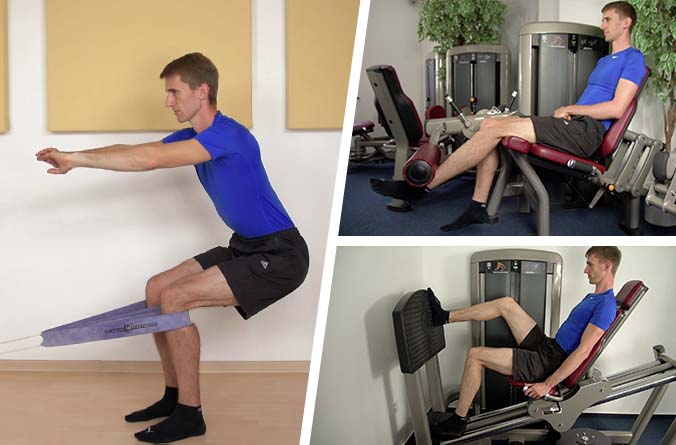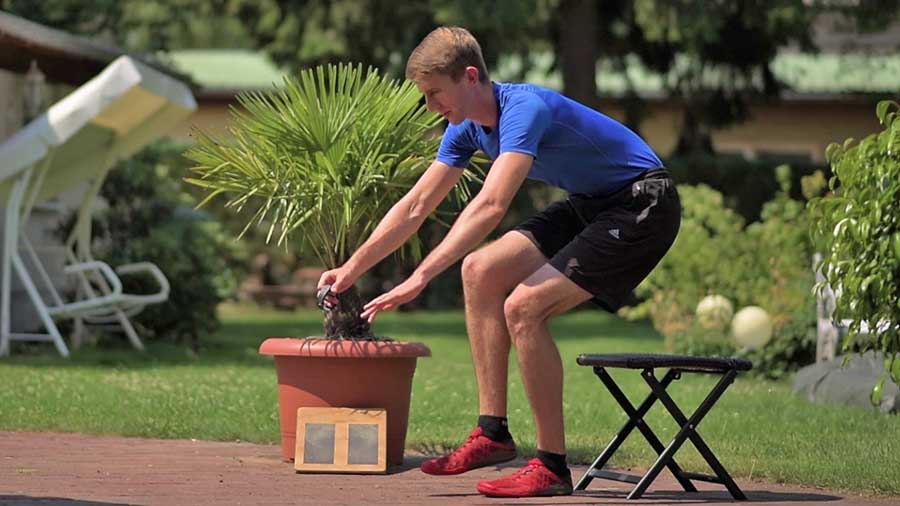If you’ve had patellar tendonitis for more than a few weeks, you’ve probably asked yourself whether it will ever go away again. If so, this video is for you. Let’s dive in.
First of all, I’m not a doctor. If you have any injury or suspect that you have an injury, go get diagnosed and treated by a doctor.
Before continuing, read the full disclaimer here.
That being said, I’ve had patellar tendonitis in 2009 and have been helping people get rid of it since 2011. I’ve even written a book about it in 2013.
The reason I mention this is because I’ve seen thousands of stories play out over the years and while everyone’s situation is unique in some way, there are common patterns.
To give a quick answer to the question “Does patellar tendonitis ever go away again?”:
Yes, the majority of people I’ve worked with can get back to sports without pain and without limitations. Patellar tendonitis is no longer an issue for them.
But there’s one important caveat:
Even if you do the right things at the right time, the process will still be slow. I’ll talk about what exactly you need to do in a moment, but first I want to highlight this point again to drive it home.
The process will be slow, definitely slower than you’d like, even if you barely make any mistakes. And if you make mistakes or don’t know exactly what you’re doing it will be two steps forward, two steps back for a long time.
So what exactly is it that you need to do? It’s a 5-step process:
Step 1
The first step is allowing your knees to calm down. To do this you avoid all activities that cause flare-ups or irritation until your pain no longer goes down further.
Once pain no longer changes, it’s time for step #2.
Step 2
Next you have to find a tendon strengthening exercise that works for you. I’ve mentioned plenty of options in my email course, but the most popular choices are:
- Slow bodyweight squats
- Slow leg presses
- Isometric holds on the leg extension machine

Of course there are many other exercises and if you spend any time online you’re bound to find sensational headlines (“Stop doing…”) proclaiming one exercise king and the others trash, but in my experience that’s just not accurate and just a trick to get views.
I’ve seen people that couldn’t get leg extensions to work for them no matter what they changed. Once they tried slow squats, they were suddenly making progress.
But I’ve seen the opposite too:
People that were struggling with slow squats, only to make good progress once they switched to machine exercises.
That’s why I can say for certain that there’s no one best exercise.
You have to try different ones to find what works in your particular situation. The overall process is the same for everyone, but details such as these are always different.
Here’s a list of patellar tendonitis treatments and exercises.
Step 3
You need to stick with your tendon strengthening exercise until your knees can tolerate high weights without issues.
For example, my rule of thumb is that you need to be able to do 15 slow single-leg squats to parallel without pain, before it’s safe to get back into sports. But this is just a rough guideline.

Still, far too many people stop their tendon exercises once their knees feel better, but that’s a mistake. You need to keep going until you’re very strong. Then you’re ready for step 4.
Step 4
Step 4 is about getting back into sports slowly.
For months and months you’ve diligently been doing those boring exercises. Eventually your knees will feel almost normal again. At that point the urge to go crazy in sports will be huge.
It’s like someone who has almost died of dehydration in the desert finally gets back to civilization and they can’t wait to drink a few buckets ice-cold water.
But just like the person coming back from the desert you have to take it slow. Do very light sports, once per week, for just 10 to 20 minutes. Then take it from there.

Don’t jump back in at 100%, because that’s a sure-fire way to cause a setback.
Finally, step 5 is about keeping up some maintenance routine and always giving your knees enough time to recover between intense training sessions. Odds are this is still music from the future for you, but I wanted to mention it to complete the list.
So that’s it:
Yes, in the majority of cases patellar tendonitis goes away again, but to make it happen you need to go through this 5-step process.
Obviously there are a lot more details to it than we can cover in a 5 minute video, so if you haven’t already, sign up to my free email course about getting rid of patellar tendonitis:
That’s where the magic happens.
See you next time.
